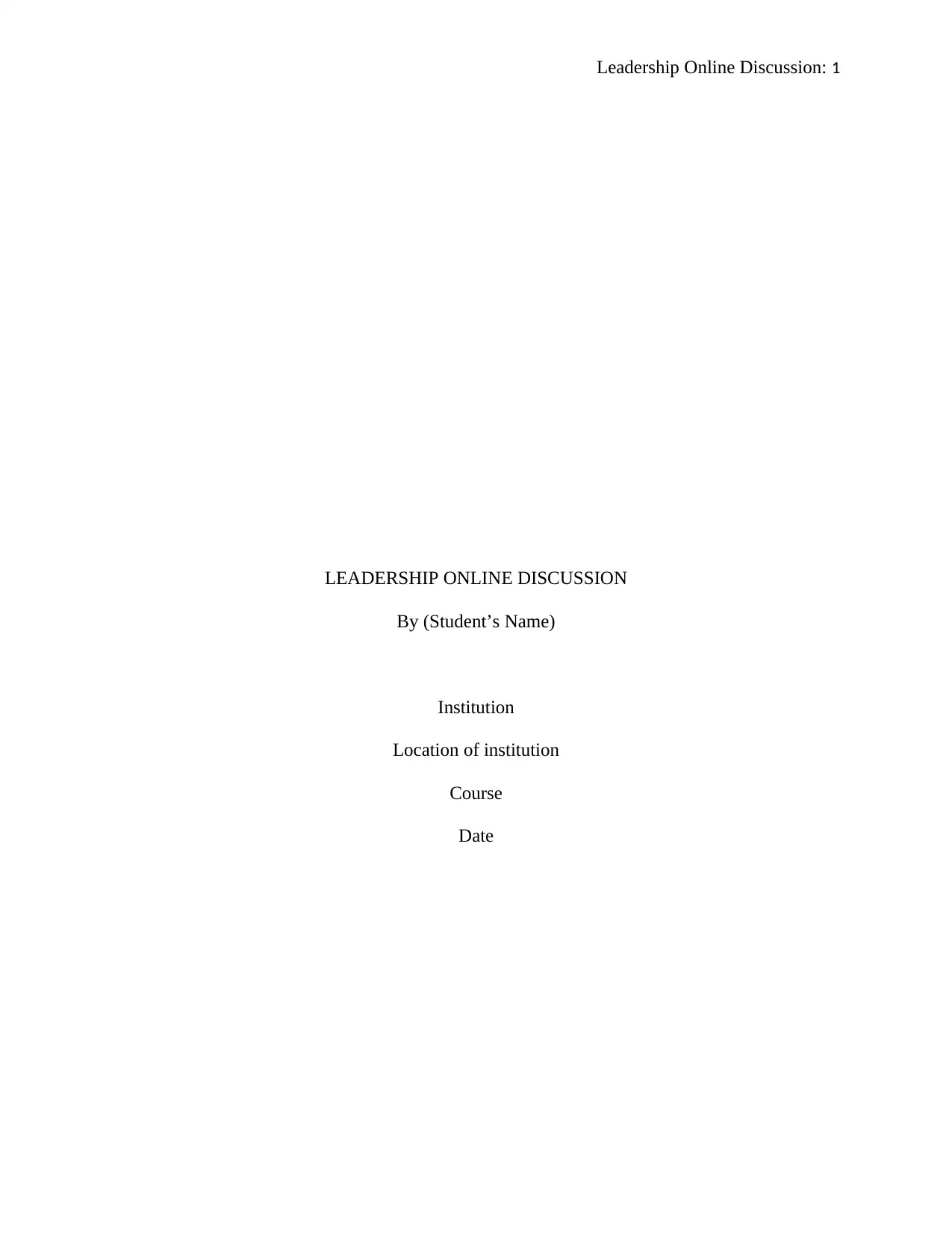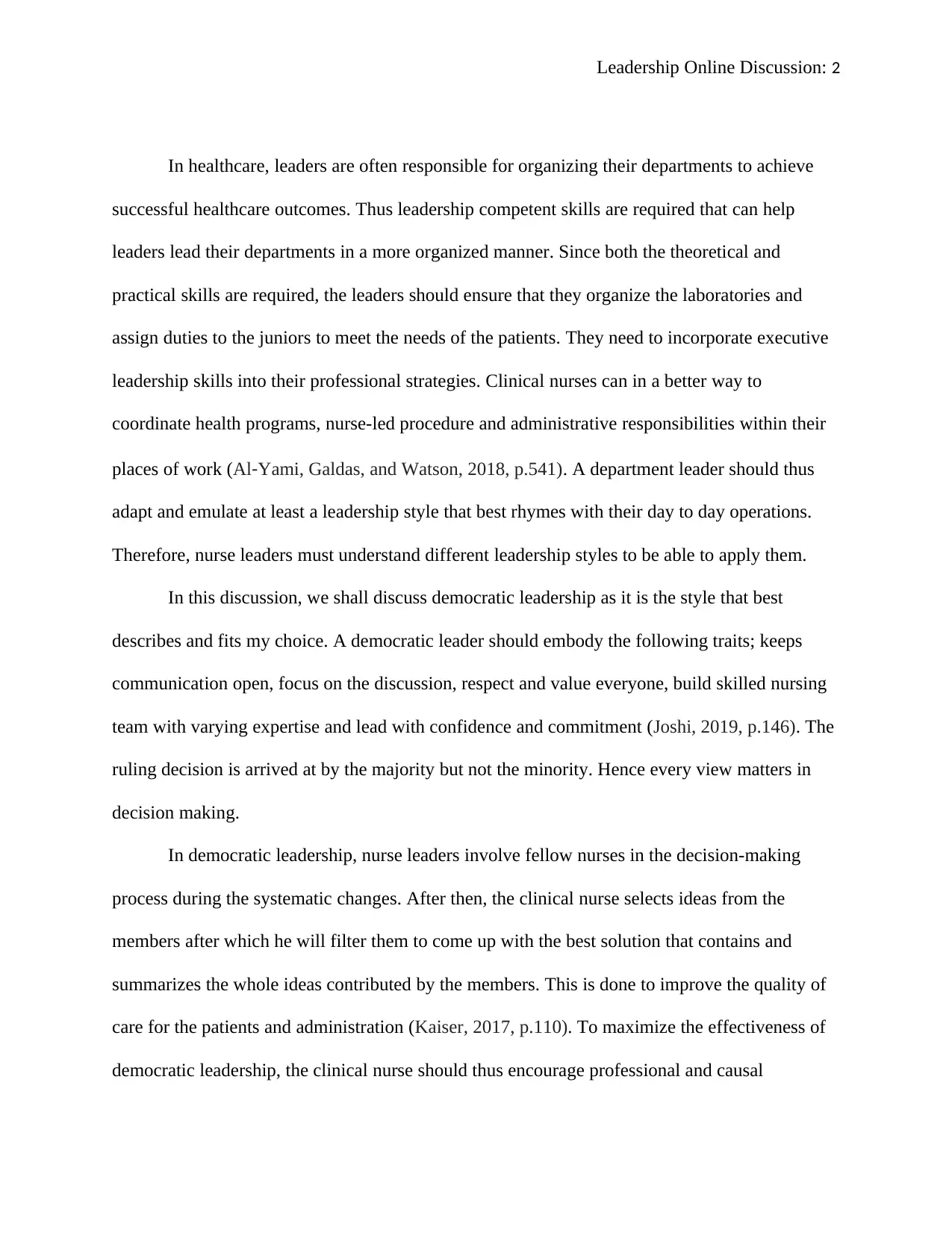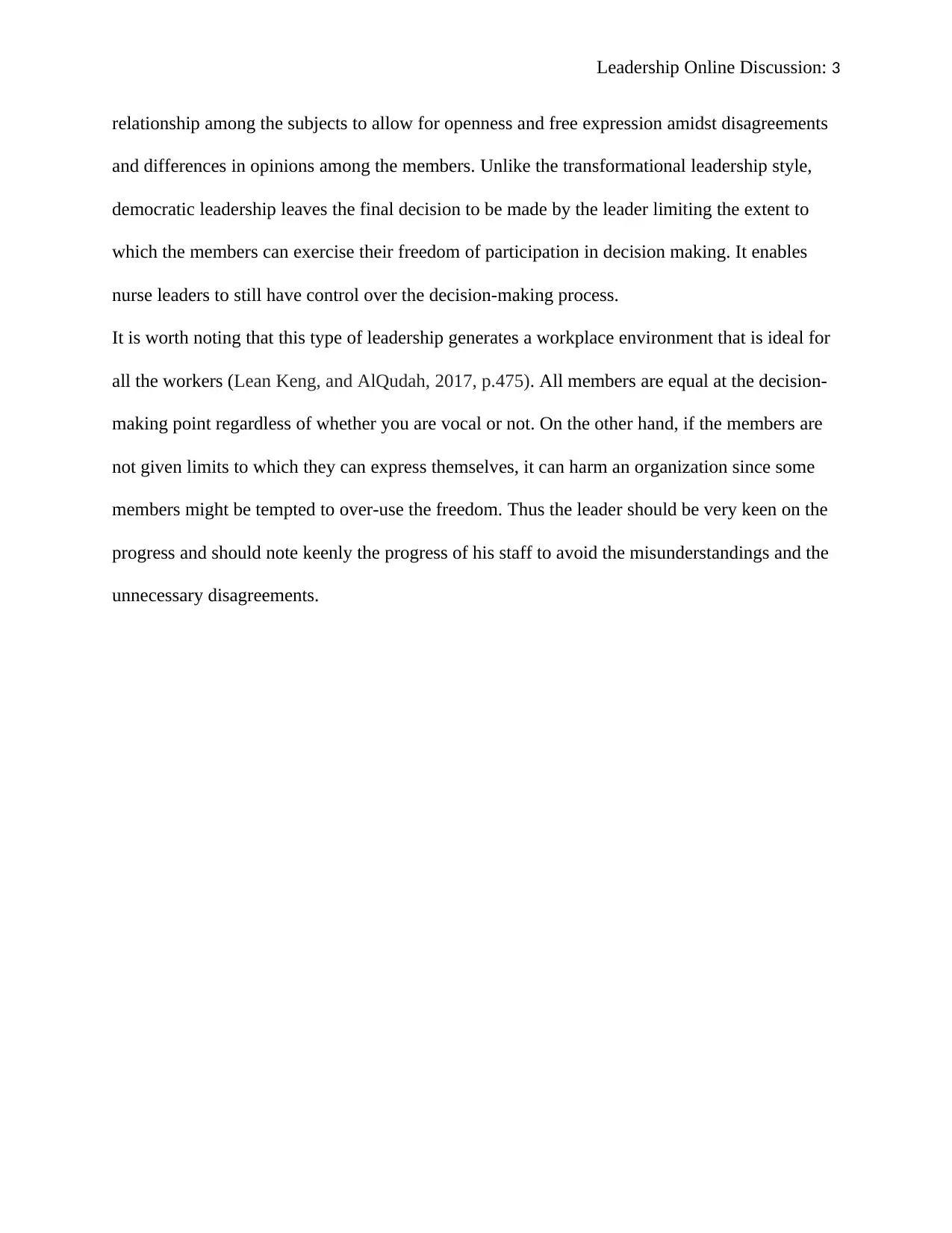Leadership Discussion: Democratic Leadership and Nursing Practice
VerifiedAdded on 2022/09/26
|4
|688
|38
Discussion Board Post
AI Summary
This discussion post delves into democratic leadership within the healthcare setting, emphasizing its relevance to nursing practice. It highlights the importance of leadership skills in organizing departments for successful patient outcomes. The post defines democratic leadership, outlining its key characteristics such as open communication, respect for all members, and collaborative decision-making. It contrasts democratic leadership with other styles, emphasizing the leader's role in facilitating a collaborative environment while retaining control over decision-making. The post also addresses potential challenges, such as the risk of over-using freedom of expression, and stresses the need for leaders to monitor staff progress to prevent misunderstandings. References support the discussion, providing further context on leadership styles and organizational commitment within healthcare.
1 out of 4











![[object Object]](/_next/static/media/star-bottom.7253800d.svg)